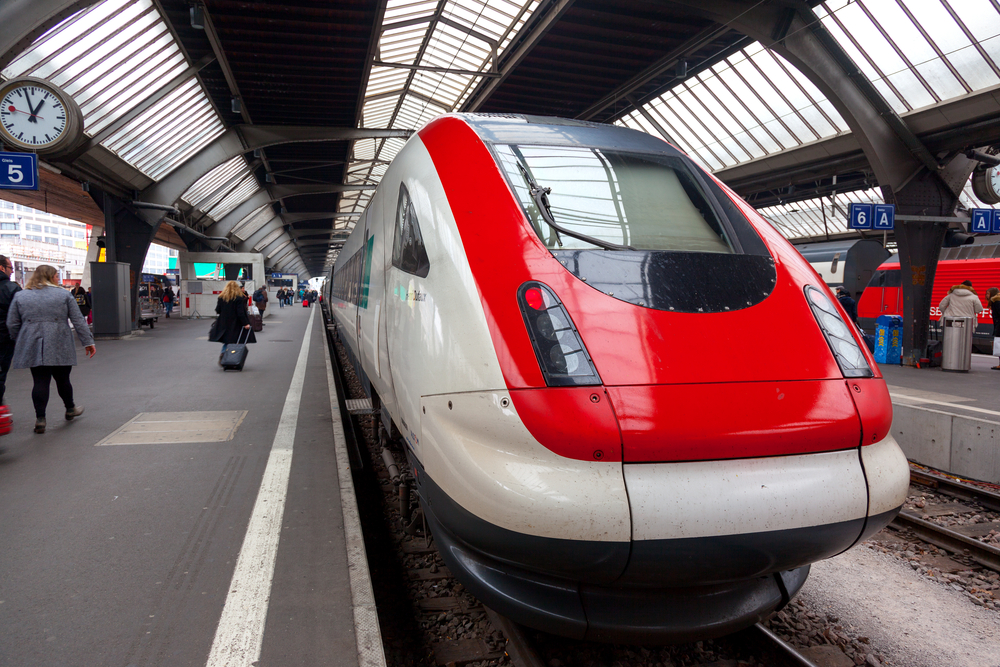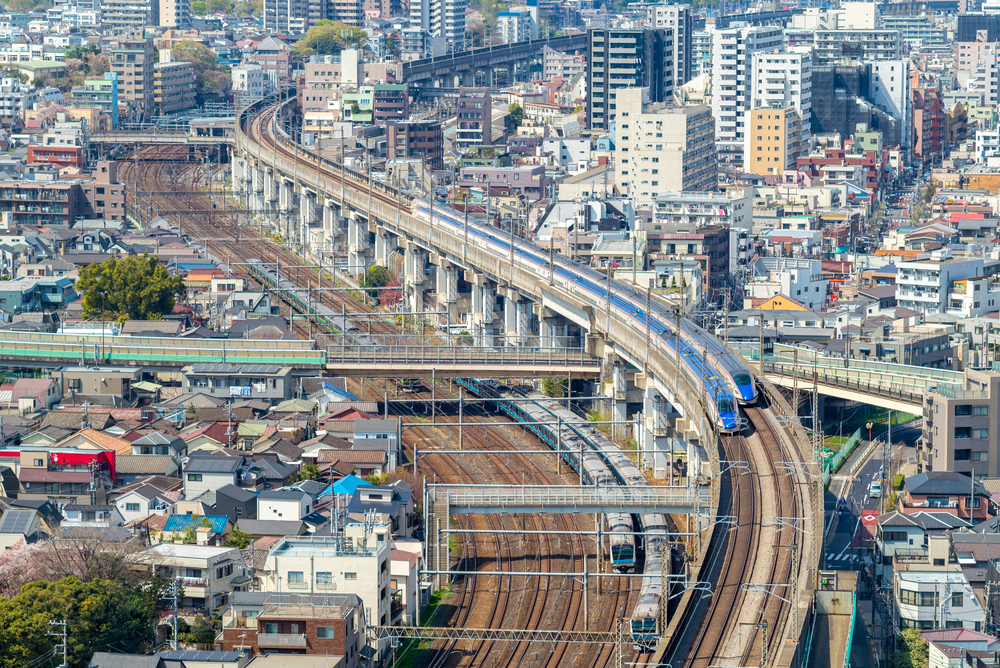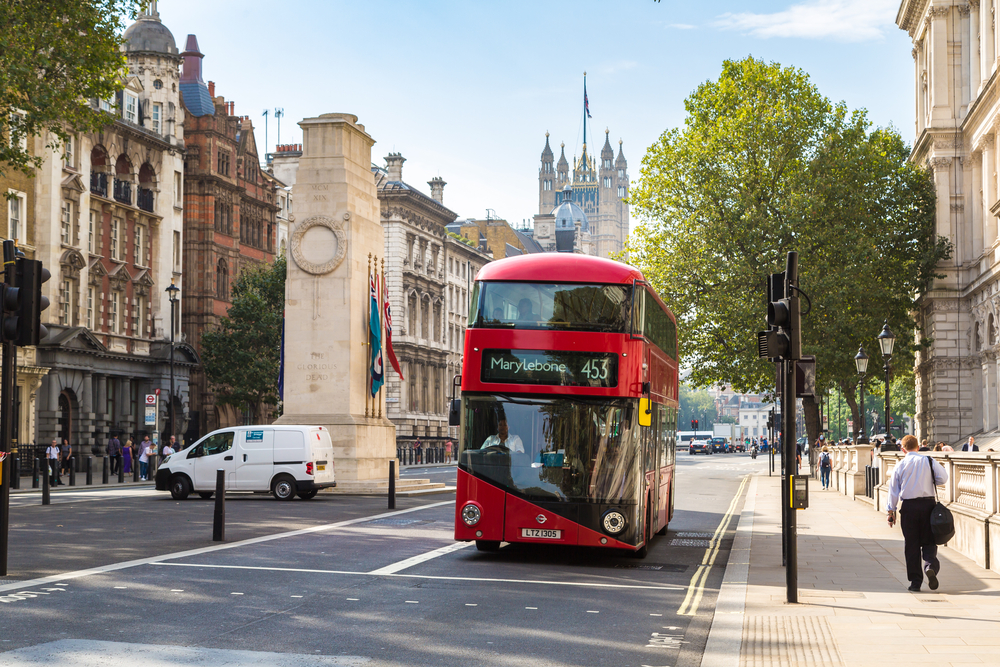Urban public transportation systems play a crucial role in reducing traffic congestion, curbing pollution, and promoting a sustainable lifestyle. The world’s leading cities have invested heavily in efficient and reliable public transport infrastructure to provide residents and visitors with seamless mobility options. These cities showcase exceptional planning, innovation, and commitment to an eco-friendly future, from subways and buses to trams and commuter trains. Let’s take a closer look at 20 cities with the best public transport systems in the world, known for their extensive networks, punctuality, and ease of use. This list might change over time as cities invest in and improve their public transportation systems.
Cities with the best public transit systems
Are you an urban explorer who loves to navigate new cities easily, or someone looking for environmentally friendly travel options? Public transportation can be vital to experience a city’s culture, infrastructure, and overall vibe. In the list below, we’ll guide you through some of the world’s top cities known for their excellent public transport systems. Discover how these cities have mastered the art of moving people efficiently, sustainably, and enjoyably, making them the perfect destinations for your next urban adventure. So buckle up and get ready to embark on a journey that will take you from the bustling underground subways to scenic ferry rides and beyond.
1. Hong Kong, China:

Hong Kong, one of the world’s most densely populated cities, has developed an efficient and reliable public transportation network to meet the needs of its residents and visitors. That makes Hong Kong one of the cities with the best public transportation in the world. The Mass Transit Railway (MTR) serves as the backbone of the city’s public transport system, covering urban areas with an extensive network of underground and above-ground lines. The MTR is renowned for its frequent service, with trains arriving as often as every two minutes during peak hours, and its impressive punctuality, boasting a 99% on-time rate.
Complementing the MTR, Hong Kong’s bus network is comprehensive and well-managed, featuring double-decker buses that serve a multitude of routes throughout the city and its outlying areas. The buses are clean, air-conditioned, and equipped with electronic displays that provide real-time route and schedule information. Furthermore, the city’s iconic trams, also known as “ding-dings” for the sound of their bells, run on six routes through the northern part of Hong Kong Island. The trams offer an affordable, eco-friendly, and nostalgic means of transportation for both locals and tourists.
Another unique aspect of Hong Kong’s public transportation system is the ferry service, which connects various parts of the city across Victoria Harbour. The Star Ferry, in operation since 1888, is one of the most iconic attractions in Hong Kong, offering a scenic journey between Hong Kong Island and the Kowloon Peninsula.
Additionally, there are numerous other ferries that serve outlying islands and the New Territories, providing an essential transportation option for many residents. The Octopus card, a contactless smart card, simplify fare payments and transfers among different modes of transport, making travel seamless and convenient for passengers.
2. Zurich, Switzerland

Zurich’s public transportation network is a model of efficiency, punctuality, and eco-friendliness, comprising trams, buses, and the S-Bahn commuter rail system. Primarily powered by electricity, the city’s transportation system offers a sustainable means of navigating Zurich while reducing its carbon footprint. For visitors, the Zurich Card provides unlimited access to various modes of transport, ensuring convenient and cost-effective travel throughout the city.
Trams have been an essential part of Zurich’s transportation infrastructure since the late 19th century, offering an efficient and comfortable means of travel within the city. The tram network consists of 13 lines that serve more than 160 stops, connecting various neighborhoods, landmarks, and attractions. Trams are frequent, reliable, and punctual, reflecting the Swiss commitment to precise and dependable public transport.
Buses in Zurich complement the tram network by serving areas not reached by trams. With over 50 bus lines, including local, regional, and express services, the city’s bus network connects various destinations, ensuring that residents and visitors can easily access all corners of the city. The fleet includes electric and hybrid buses, reflecting Zurich’s focus on sustainable transportation solutions.
The S-Bahn commuter rail system serves the greater Zurich area, connecting the city center with suburban and regional destinations. The network consists of 26 lines, reaching more than 170 stations within the canton of Zurich and extending to neighboring cantons. The S-Bahn offers fast and frequent service, enabling passengers to efficiently travel between the city and surrounding areas.
Zurich’s public transportation system is primarily powered by electricity, reducing its environmental impact and contributing to the city’s sustainability efforts. The use of electric trams, buses, and trains demonstrates Zurich’s commitment to clean and green transport options, setting an example for other cities around the world.
The Zurich Card simplifies travel within the city by providing unlimited access to all forms of public transportation, including trams, buses, and the S-Bahn. Available in 24-hour and 72-hour versions, the card allows tourists to explore Zurich at their own pace without worrying about purchasing individual tickets. Additionally, the card offers discounts on various attractions, museums, and tours, making it an excellent value for visitors.
Read More: The best cities in Africa
3. Stockholm, Sweden

Stockholm, Sweden: The Swedish capital boasts an extensive public transportation system, which encompasses the Tunnelbana (subway), commuter trains, buses, and ferries. This efficient, eco-friendly network spans across the city and its numerous islands, providing passengers with a seamlessly integrated and enjoyable travel experience. The SL Access card further streamlines travel, facilitating smooth transfers between the various modes of transport.
The Tunnelbana, also known as the Stockholm Metro, is the backbone of the city’s public transportation system. It is comprised of 100 stations spread across seven lines and covers a distance of approximately 110 kilometers. The metro’s distinct and artistically designed stations are considered the world’s longest art gallery, providing passengers with a unique cultural experience as they travel throughout the city.
Stockholm’s commuter trains, or pendeltåg, offer convenient travel between the city center and suburban areas. With over 50 stations and four lines, the commuter network of trains extends up to 150 kilometers from the city center, efficiently connecting Stockholm to nearby towns and cities. During peak hours, trains operate at frequent intervals to accommodate the high demand for transportation.
Buses play a significant role in Stockholm’s public transport system, connecting various neighborhoods and complementing the Metro and commuter trains. The city operates a vast network of regular, night, and express buses that cater to a wide range of travel needs. Stockholm also offers several electric bus routes, demonstrating its commitment to sustainable, eco-friendly transportation solutions.
Ferries provide a delightful and scenic way to explore Stockholm’s numerous islands and waterfront attractions. The city’s public transportation network includes several ferry routes that link different parts of the archipelago, allowing passengers to enjoy picturesque views while traversing the waterways. Some popular ferry lines even offer guided tours, giving visitors an opportunity to learn more about Stockholm’s history and culture.
4. Singapore, Singapore

Singapore’s public transportation system has earned a reputation for its cleanliness, punctuality, and extensive coverage, setting an example for cities worldwide. The Mass Rapid Transit (MRT) system, with its frequent trains and extensive network, spans across the island city-state, connecting residential areas, commercial districts, and tourist attractions. MRT stations are well-maintained, air-conditioned, and equipped with clear signage to ensure a pleasant commuting experience.
Complementing the MRT system, Singapore’s extensive bus network serves virtually every corner of the city, providing an affordable and convenient means of transportation. The buses are clean, air-conditioned, and equipped with electronic displays that provide real-time route and schedule information. Both MRT and bus services use a contactless fare card called the EZ-Link, allowing passengers to easily transfer between the two modes of transport.
In addition to the MRT and buses, the Light Rail Transit (LRT) systems serve specific neighborhoods, providing a feeder service to the MRT lines and further enhancing the connectivity within residential areas. For those looking for more personalized transport options, Singapore boasts a vast network of taxis and ride-hailing services that provide door-to-door service at reasonable prices. These taxis are safe, well-regulated, and driven by knowledgeable drivers, ensuring a comfortable ride for passengers.
Cycling and walking paths are being continually expanded in the city, promoting a healthy and environmentally friendly means of transport. Singapore’s government is consistently investing in developing and improving the public transportation infrastructure, focusing on providing efficient, eco-friendly, and comfortable travel experiences for residents and tourists.
5. Helsinki, Finland

The Finnish capital is known for its well-organized and efficient public transportation system, which includes the metro, trams, buses, commuter trains, and ferries. This comprehensive network serves the city center, suburbs, and even the nearby archipelago, providing both residents and tourists with a seamless and enjoyable travel experience. The HSL card facilitates easy transfers between these various modes of transport, making it convenient for passengers to navigate the city.
The Helsinki Metro, operating since 1982, is the northernmost metro system in the world. It consists of two lines (M1 and M2), with a total of 25 stations connecting the eastern suburbs to the city center. Known for its reliability and punctuality, the metro offers frequent service throughout the day, efficiently traversing the city.
Trams have been integral to Helsinki’s transportation landscape since the 19th century. The city’s tram network consists of 10 lines and over 130 stops, serving mainly Helsinki’s central and southern parts. The trams not only offer a practical way to travel but also add a touch of historical charm to the cityscape.
Buses play a crucial role in Helsinki’s public transportation system, connecting areas not served by the metro or trams. The city operates an extensive network of local, regional, and express buses, ensuring that passengers can easily reach various neighborhoods and destinations. Night buses provide a convenient transportation option during nighttime hours, while eco-friendly electric and biogas buses showcase Helsinki’s commitment to sustainable transport solutions.
Commuter trains in Helsinki connect the city center to the surrounding metropolitan area, including nearby cities such as Espoo, Vantaa, and Kerava. The train network, consisting of four main lines and several branches, offers a fast and reliable mode of transport for commuters and visitors alike.
Ferries serve as a vital link between Helsinki’s mainland and its surrounding archipelago. Several ferry lines, including the public Suomenlinna ferry, offer regular service between the city center and various islands, allowing passengers to enjoy scenic views of the Baltic Sea while exploring the region’s natural beauty.
The HSL card simplifies travel within Helsinki’s public transportation system by allowing passengers to seamlessly transfer between the metro, trams, buses, commuter trains, and ferries. The card can be easily recharged with various ticket options, such as single, day, or season tickets. By offering an integrated payment solution, the HSL card ensures a hassle-free and efficient way for locals and tourists to explore the city.
6. Tokyo, Japan

The bustling metropolis of Tokyo boasts an extensive and efficient public transport system that includes trains, subways, and buses. The city’s rail network is the busiest in the world, with the JR East, Tokyo Metro, and Toei Subway serving millions of passengers daily. The famous Shinkansen, or bullet train, connect Tokyo to other major cities in Japan, providing a fast and comfortable travel experience.
Tokyo is a city that never sleeps, and its public transport system reflects this. With trains running 24 hours a day, seven days a week, and buses operating throughout the night, getting around Tokyo is a breeze. The city’s rail network is incredibly well-connected, with over 13,000 trains running each day on 158 lines. This means that no matter where you need to go in Tokyo, there is always a train that will take you there.
One of the most popular modes of transportation in Tokyo is the subway. The Tokyo Metro and Toei Subway systems cover almost every corner of the city, with 13 lines and over 290 stations. The subway is fast, efficient, and easy to navigate, making it the perfect way to explore Tokyo’s many neighborhoods. And with trains running every few minutes, you never have to wait long to get where you’re going.
Another popular option for getting around Tokyo is the bus. The city’s bus network is vast, with over 400 routes and more than 10,000 stops. Buses in Tokyo are clean, comfortable, and air-conditioned, making them a great option for sightseeing on a hot day. And with a flat fare of just 210 yen (around $2), they’re also an affordable way to get around the city.
But perhaps the most exciting way to travel in Tokyo is by Shinkansen or bullet train. These high-speed trains connect Tokyo to other major cities in Japan, including Kyoto, Osaka, and Hiroshima. With speeds of up to 320 km/h (200 mph), the Shinkansen is the fastest and most comfortable way to travel long distances in Japan. And with frequent departures throughout the day, you can easily plan a day trip or weekend getaway to one of Japan’s other amazing cities.
In addition to its extensive public transport system, Tokyo is also home to a number of private transportation options. Taxis are readily available throughout the city, and while they can be a bit pricey, they’re often the most convenient way to get around if you’re short on time. Tokyo also has a bike-sharing system called “Tokyo Bike Share,” which allows you to rent a bicycle for a short period of time and explore the city on two wheels.
7. Paris, France

Paris, France, is known for its sophisticated and intricate public transportation system, which offers an efficient and comprehensive means of traversing the city and its surrounding areas. At the heart of this system lies the Paris Metro, one of the world’s oldest and densest underground networks. With 16 lines and over 300 stations, the metro covers the entirety of Paris and extends into some suburban areas, providing rapid transit for millions of passengers daily.
The RER (Réseau Express Régional) commuter train system is complementing the Paris Metro, which links central Paris with the city’s suburbs and the broader Île-de-France region. The RER consists of five lines (A, B, C, D, and E) that interconnect with the metro, making it easy for passengers to transfer between the two systems. This integrated network ensures efficient transportation for those commuting to and from the city center.
In addition to the Metro and RER trains, Paris has an extensive network of buses and trams. Buses operate on numerous routes throughout the city, serving areas that are not directly accessible by the Metro or RER. The tram system, consisting of several lines, provides an eco-friendly and convenient means of transportation, particularly in the suburbs.
The Paris public transportation system is tied together by the Navigo card, a contactless smart card that allows passengers to easily transfer between different modes of transport. It can be topped up with weekly or monthly passes or used on a pay-as-you-go basis.
Furthermore, the high-speed TGV (Train à Grande Vitesse) trains to connect Paris to other major cities in France and Europe, ensuring swift and comfortable intercity travel. Major train stations in Paris, such as Gare du Nord, Gare de Lyon, and Gare Montparnasse, serve as transportation hubs for both domestic and international travel.
8. Berlin, Germany

Berlin’s public transportation system is a comprehensive and efficient network that offers multiple options to get around the city. This system is composed of the U-Bahn (underground/subway), S-Bahn (urban and suburban trains), buses, and trams, which provide frequent and reliable service for residents and tourists to easily explore the city.
The U-Bahn is Berlin’s underground railway network, with ten lines that cover over 150 kilometers of track and serve more than 170 stations. Trains run frequently, and it is the quickest way to travel between different neighborhoods and attractions in the city.
Conversely, the S-Bahn is a network of urban and suburban trains extending beyond the city limits, connecting Berlin to its surrounding areas. With 15 lines and around 170 stations, the S-Bahn offers fast and convenient transportation to destinations within the city and the greater metropolitan region.
Berlin’s bus network is extensive, consisting of over 200 lines that connect various neighborhoods and destinations. This includes the Express Bus (X-Bus), which operates during peak hours to provide faster service, and the Metro Bus (M-Bus), which operates on major routes with frequent stops. Additionally, night buses (N-Bus) ensure continuous service during nighttime hours.
Trams are another integral part of Berlin’s public transportation system, with 22 lines spanning approximately 430 kilometers. The tram network primarily serves the city’s eastern parts, and it offers a scenic and leisurely way to explore Berlin’s neighborhoods and attractions.
The Berlin Hauptbahnhof (main train station) is a central hub for regional, national, and international trains, ensuring seamless connectivity between the city’s public transportation system and long-distance travel options. The Hauptbahnhof, located in the heart of the city, is an architectural marvel and one of Europe’s largest and most modern train stations. From here, passengers can access the U-Bahn, S-Bahn, buses, and trams to easily reach various parts of the city or embark on journeys to other regions and countries.
The SL Access card simplifies travel within Stockholm’s public transportation system by enabling passengers to seamlessly transfer between the various modes of transport. The card, which can be easily recharged, can be used on the Tunnelbana, commuter trains, buses, and ferries. By providing an integrated payment system, the SL Access card offers a hassle-free and efficient way for locals and tourists to explore the city.
9. London, United Kingdom

London, United Kingdom, boasts one of the world’s most recognizable and historical public transportation systems. The city’s iconic London Underground, commonly known as the Tube, has been in operation since 1863 and serves as the backbone of the transport network. With 11 lines and over 270 stations, the Tube connects London’s diverse neighborhoods and offers commuters a reliable and efficient means of transportation.
In addition to the Tube, London’s extensive network of red double-decker buses enhances the city’s connectivity, providing frequent services and covering a vast number of routes. These buses are an integral part of London’s public transport system and offer a convenient way to reach destinations not directly served by the Underground. London’s bus network operates around the clock, with a reduced number of night bus routes ensuring continuous service during the late hours.
Supplementing the Tube and bus networks, the Docklands Light Railway (DLR) provides automated, driverless service in the eastern parts of the city and the redeveloped Docklands area. The DLR connects to several Underground lines, enabling passengers to easily transfer between the two systems. Furthermore, London’s tram network, Tramlink, serves the southern parts of the city, offering an eco-friendly and efficient mode of transport.
London’s Oyster card, a contactless smart card, simplifies fare payments and transfers across different modes of transportation, including the Tube, buses, trams, the DLR, London Overground, and select National Rail services. The Oyster card can be easily topped up at stations, Oyster Ticket Stops, and online, providing a convenient and cashless way to travel throughout the city.
10. New York City, United States

New York City boasts one of the largest and most comprehensive public transportation systems in the world, consisting of the extensive New York City Subway, buses, and ferries. Although the city faces challenges such as aging infrastructure, the Metropolitan Transportation Authority (MTA) remains dedicated to providing reliable service to millions of passengers each day.
The New York City Subway is the backbone of the city’s public transportation system, featuring 24 lines, over 470 stations, and more than 840 miles of track. As one of the oldest and busiest subway systems in the world, it operates 24 hours a day, 7 days a week, connecting passengers to all five boroughs of the city: Manhattan, Brooklyn, Queens, the Bronx, and Staten Island. The iconic subway system enables both residents and tourists to navigate the sprawling metropolis efficiently and affordably.
In addition to the subway, the MTA operates a vast network of buses throughout the city, with over 5,700 buses on more than 300 routes. Buses provide an essential service, especially in areas not directly served by the subway, and they connect neighborhoods within and across the five boroughs. Express buses are also available for longer distances and faster travel, particularly during rush hours.
Ferries offer a scenic and enjoyable way to travel within the city, particularly between Manhattan and the other boroughs, as well as to popular attractions like the Statue of Liberty and Governors Island. The Staten Island Ferry, for example, provides free service between Staten Island and Lower Manhattan, operating 24 hours a day, while the NYC Ferry system offers additional routes connecting various waterfront destinations throughout the city.
Despite its extensive network, the New York City public transportation system faces some challenges, including aging infrastructure, which can lead to service disruptions and delays. However, the MTA continues to invest in modernizing the system through various initiatives, such as updating signal technology, improving accessibility, and adding new subway cars and buses to the fleet.
Conclusion: Cities with the best public transit
In conclusion, the cities with the best public transit systems offer residents and visitors alike an efficient, sustainable, and enjoyable means of exploring and navigating their urban landscapes. From the bustling underground subways of New York City to the eco-friendly trams of Zurich, these large cities have invested in comprehensive and reliable networks that cater to diverse transportation needs.
As a result, they provide a seamless travel experience that encourages people to utilize public transportation, ultimately contributing to reduced traffic congestion, lower carbon emissions, and more vibrant urban life. So, the next time you plan a trip, consider visiting one of these top cities with exceptional public transit systems and experience firsthand the benefits and ease of exploring new destinations through their well-designed networks.
